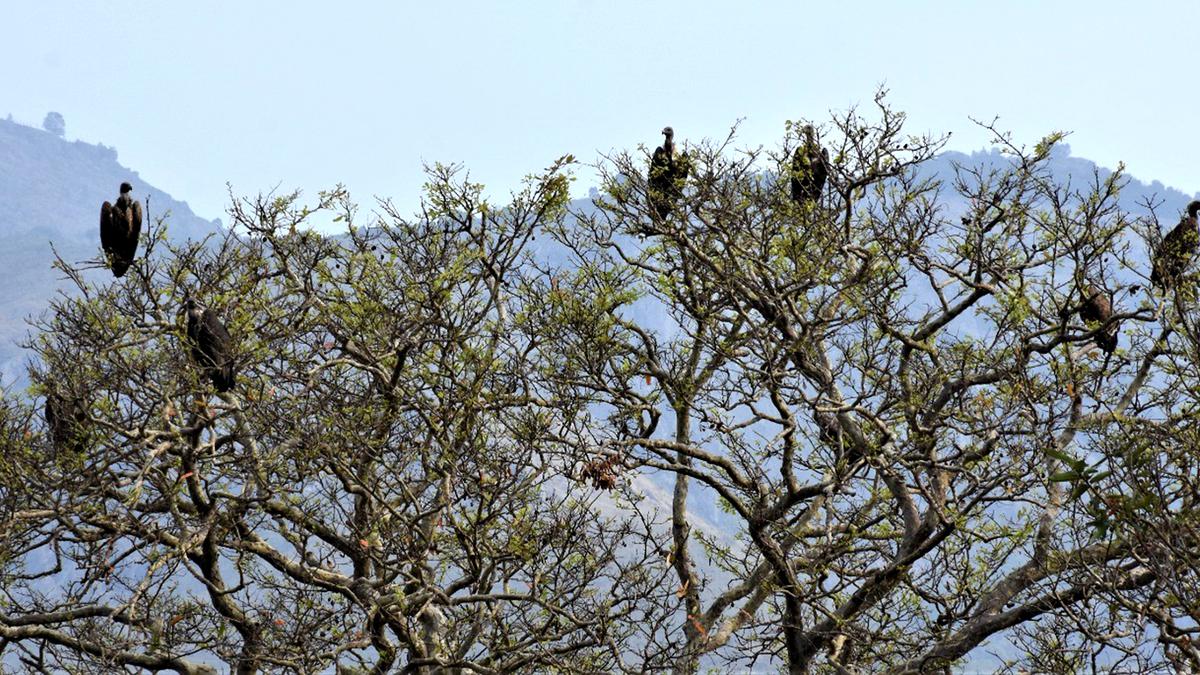News Highlight
Kerala, Tamil Nadu and Karnataka to begin the first synchronised vultures survey on February 24
Key Takeaway
- The Kerala Forest and Wildlife Department and its counterparts in Tamil Nadu and Karnataka are preparing to organise the first synchronised vulture survey in select regions of the Western Ghats on February 24, 25 and 26.
Survey of Vultures
- Key Findings
- Wayanad Wildlife Sanctuary, which borders Nagarhole and Bandipur tiger reserves in Karnataka and Mudumalai in Tamil Nadu, is Kerala’s only vulture haven.
- Vultures suffered a catastrophic population fall in the 2000s after exposure to the anti-inflammatory drug diclofenac, used to treat cattle pain.
Species of Vultures found in India and their Conservation Status
- Bearded Vulture – Near Threatened
- Cincerous Vulture – Near Threatened
- Egyptian Vulture – Endangered
- Griffon Vulture – Least Concern
- Himalayan Vulture/Griffon – Near Threatened
- Indian Vulture – Critically Endangered
- Indian White-rumped Vulture – Critically Endangered
- Red-headed Vulture – Critically Endangered
- Slender-billed Vulture – Critically Endangered
Vultures Species in India
- About
- It is one of 22 huge carrion-eating bird species in the tropics and subtropics.
- They are vital as nature’s garbage collectors, helping keep the environment clean and debris-free.
- Vultures also play an important role in the control of wildlife illnesses.
- India is home to 9 species of Vulture; the Oriental white-backed, Long-billed, Slender-billed, Himalayan, Red-headed, Egyptian, Bearded, Cinereous and Eurasian Griffon.
- Threats
- Toxicity from diclofenac, which is used as a livestock treatment.
- Natural habitat loss as a result of anthropogenic activities.
- Food scarcity and contamination.
- Electrocuted in electricity lines.
Biological adaptations that make vultures excellent scavengers
- Vultures have numerous biological characteristics that make them ideal scavengers.
- All vultures have good eyesight, and the turkey vulture has a good sense of smell.
- Vultures from the Old World have rather robust feet, whereas New World Vultures have weak flat feet that are poorly adapted for grabbing.
- Many vultures are also bald, which means they lack feathers on their heads.
- This keeps carrion fragments from clinging to the bird’s feathers and poisoning it with deadly microorganisms.
- Vultures’ stomachs are very acidic, killing disease-spreading bacteria and parasites in rotting flesh.
- Most vultures have a big pouch in their throat (crop) and may go for extended periods without eating.
Conservation Efforts
- The Ministry of Environment, Forests, and Climate Change recently launched a Vulture Action Plan 2020-25 to conserve vultures in the country.
- It will reduce the use of Diclofenac while preventing the poisoning of vultures’ primary food source, cattle carcasses.
- In 2001, a Vulture Care Centre (VCC) was established at Pinjore, Haryana, to investigate the causes of vulture deaths in India.
- In 2004, the VCC was upgraded to India’s first Vulture Conservation and Breeding Centre (VCBC).
- There are currently nine VCBCs in India, three directly managed by the Bombay Natural History Society (BNHS).

Pic Courtesy: The Hindu
Content Source: The Hindu



